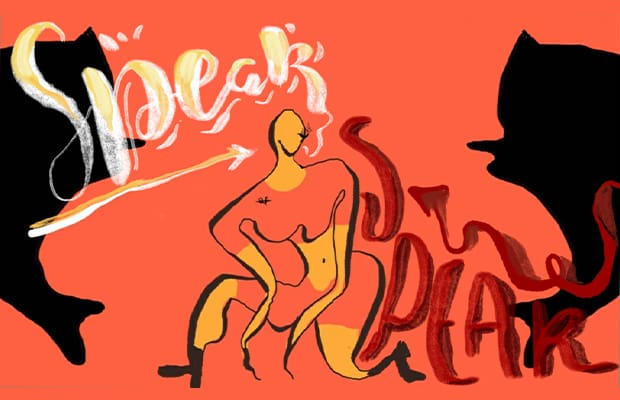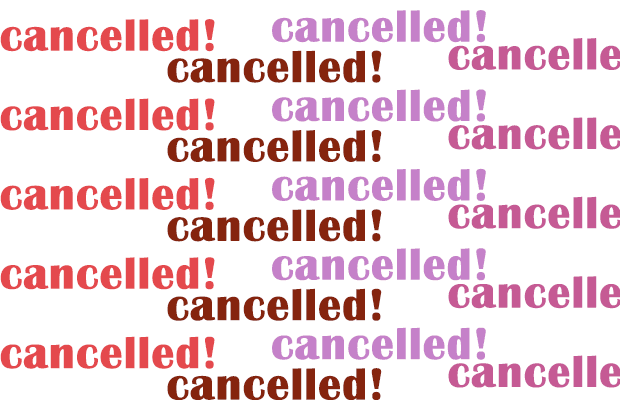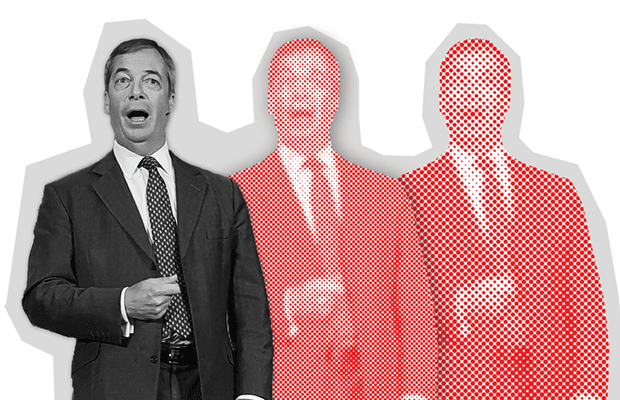Navigating the shire
Rohan Simpson explores the nature of racism in Cronulla
CW: RACIAL SLURS, RACISM, VIOLENCE
It’s one of those days in February where even the burst of cold air that ushers you into the Cronulla Woolies can’t budge the wet patch in the centre of your back. The meat aisle is, perhaps, the coolest place in the Shire today.
“Move, you black bitch!”
Mum turns around. The blue-singlet-and-thongs behind her spits through yellow teeth, “the fucken’ checkout’s free, woman.”
Startled, Mum lets Taylah shepherd her to the nearest available self-serve checkout as the other Sunday shoppers watch on silently. She arrives home teary-eyed, shocked at what had happened, but mainly frustrated that she didn’t stand up for herself.
I tend to brush off comments that the suburb I’ve called home for the majority of my life is a cesspool of Southern Cross tattoos, fish and chip shops and high-vis racism. Perhaps the recently erected 12- foot mural of Shannon Noll brandishing his Southern Cross-emblazoned breast, watching over the sandy streets like Cronulla’s very own Cristo Redentor, is an indication of that. But incidents like my mother’s remind me that despite the good-natured, small town humility of Cronulla and the insatiable desire to nod g’day to old salt-encrusted surfers, there is a layer of xenophobia that simmers below the surface. The racism seeps through often enough—an offhand comment that sits uncomfortably, a funny turn of phrase.
This is, perhaps, the conflict that I find most difficult to deal with. To me, Cronulla represents the best and worst of the Australian personality. On one hand, there’s old school mateship and an unspoken ethos of equality. Any ‘tall poppy’ that attempts to assume they’re better than anyone else will be affectionately cut down to the size of the rest of us. This attitude is rounded by a real sense of community and the communal belief that we must be the luckiest people on earth.
On the other hand, Cronulla is also the community in Sydney that is most well-known for its racist inclinations.
In December of 2005, these inclinations escaped the surface, and erupted over three hot days and nights of unbridled race riots. The ash is still settling over the events of those days, which ripped a gash through the southern suburbs of Sydney. I was young enough to be oblivious to the spread of hate that tore through the suburb; seas of men beating their chests with one hand and swigging a beer with another. A congregation gathered of fathers, sons, mothers and daughters, reclaiming their land from a Muslim invasion. They were guided by a venomous creed of nationalism and righteousness, preached through the radio waves by Alan Jones. For his disciples, there was a moral imperative to do something about Lebanese Muslims: “vermin” who wish to “rape, pillage and plunder a nation that’s taken them in.”
270,000 text messages inciting racial hatred were sent on 11 December, rallying troops to “Cronulla’s 1st wog bashing day.”
Cronulla’s bubbling xenophobia, stoked by a patriotic desire to defend their land and their way of life, caused latent feelings of mistrust to morph into active hostility. For the rioters of 2005, the Shire was “God’s Country”—a chosen island of sun, surf and small-town communitarianism. It was the final frontier against the anonymity and the individualism of the city, whose tall buildings and faintly glowing lights can be seen silhouetted in the distance from the beaches of Cronulla. This sentiment of isolation and exclusivity, which makes the Shire so unique, was also the force that helped otherise and dehumanise the ‘wogs.’ This eventually resulting in the lynch mob-style bashing of Lebanese youths who dared cross the bridge.
I remember there was a Sikh man who ran the 7/11 down next to the fish shop. He had been there for years and was a friend of my grandparents. However, Mr Singh’s tenure was cut short in ‘05 when on one of the nights, a group of masked men stopped their convoy of cars outside his store, intent upon destruction. Perhaps they had mistaken his uncut beard for that of an Arab, or perhaps the blinding anger didn’t discriminate that finely. Their attack was turned back by the timely arrival of police— however, the all too real threat of racism was enough to leave him beaten and bruised. Mr Singh left the store shortly after the riots.
2005 must, however, be put in context; the shock of 9/11 was still fresh, and the London Bombings in July earlier that year had led to a collective recognition that terrorism was a real threat, no longer confined to faraway lands and foreign wars. Additionally, decades of immigration from Asian and Middle Eastern countries meant that the bodies populating the beaches were suddenly more diverse. Cronulla’s raw response was an impetuous reaction to increasingly relevant global events and immigration flows. Like a child crying out in confusion, the people of Cronulla cried for their suburb and their country.
Eventually, the dust settled, and the weary-eyed residents wiped their eyes to the reality of what had occurred. Public apologies flowed and arrests were made.
The collective memory of the riots has faded, and the aggressive sentiments of pride and intolerance have seeped back below the surface. The incident was an ugly blight on our peaceful suburb, but “it was a one-off”, “we’re not like that anymore.” The community of Cronulla forgets what they want to, and remembers what is convenient.
The isolation and the exclusivity that enabled the riots in ‘05 is, perhaps, fading. The borders of our city are expanding; Cronulla is now within the sights of new, young and wealthy families looking for their sea change. The march of developers has aggressively flattened the sand dunes into McMansion’d suburbs. This suburban gentrification brings with it the good and the bad of yuppiefication. I can feel the small-town sentiment slowly dying as new generations opt for invisibility over indivisibility. These shifting demographics have derided the notion that Cronulla is somehow immune from engaging with the multicultural reality of Sydney, and along with it, the emotional protectionism that fuelled the riots.
I am still a proud resident of Cronulla. It will always be a special place for me, but, the community of Cronulla must continue to open its arms to the rest of Sydney. In order to avoid a re-occurrence of the anger of 2005, it must shed its ‘locals-only’ mentality, and be able to share its sunny beaches.
This article appeared in the autonomous ACAR edition, ACAR Honi 2018.





